The freedom of getting around on two wheels can be hard to beat. The rush of a fast road descent, the joy of a bunch ride and the euphoria that can arrive when cresting a climb at dawn… plenty of on the bike experiences create lasting memories. If you are looking to broaden your bike riding horizons, you may have been tempted to venture off-road, into the world of gravel. Gravel riding promises rolling ribbons of quiet dirt roads, nearly non-existent cars, and a lust for adventure. But can you easily roll from tarmac to forest roads while chasing new experiences?
There are a few key differences between road bikes and gravel bikes, and that includes how you set them up and how you ride them. These are some tips that should get you rolling into the world of gravel with a bit more confidence, comfort and safety.
Think before you act
One of the first things to think about when you explore gravel roads is cornering and braking – as the traction available is very different compared to tarmac. A tyre under brakes doesn’t have the same traction, so it is very important to get your braking done before corners. And while you might be used to spotting early entries, tight apexes and wide exits on a road descent, you have a few more elements at play when riding on gravel. Not all gravel is the same, and if you’re on a 2WD or 4WD road you’ll find the difference between the edges, wheel tracks and the centre. The trick? Look ahead early, spot your line, and open your angle of approach as much as possible, to reduce the need for late braking or changes of direction.
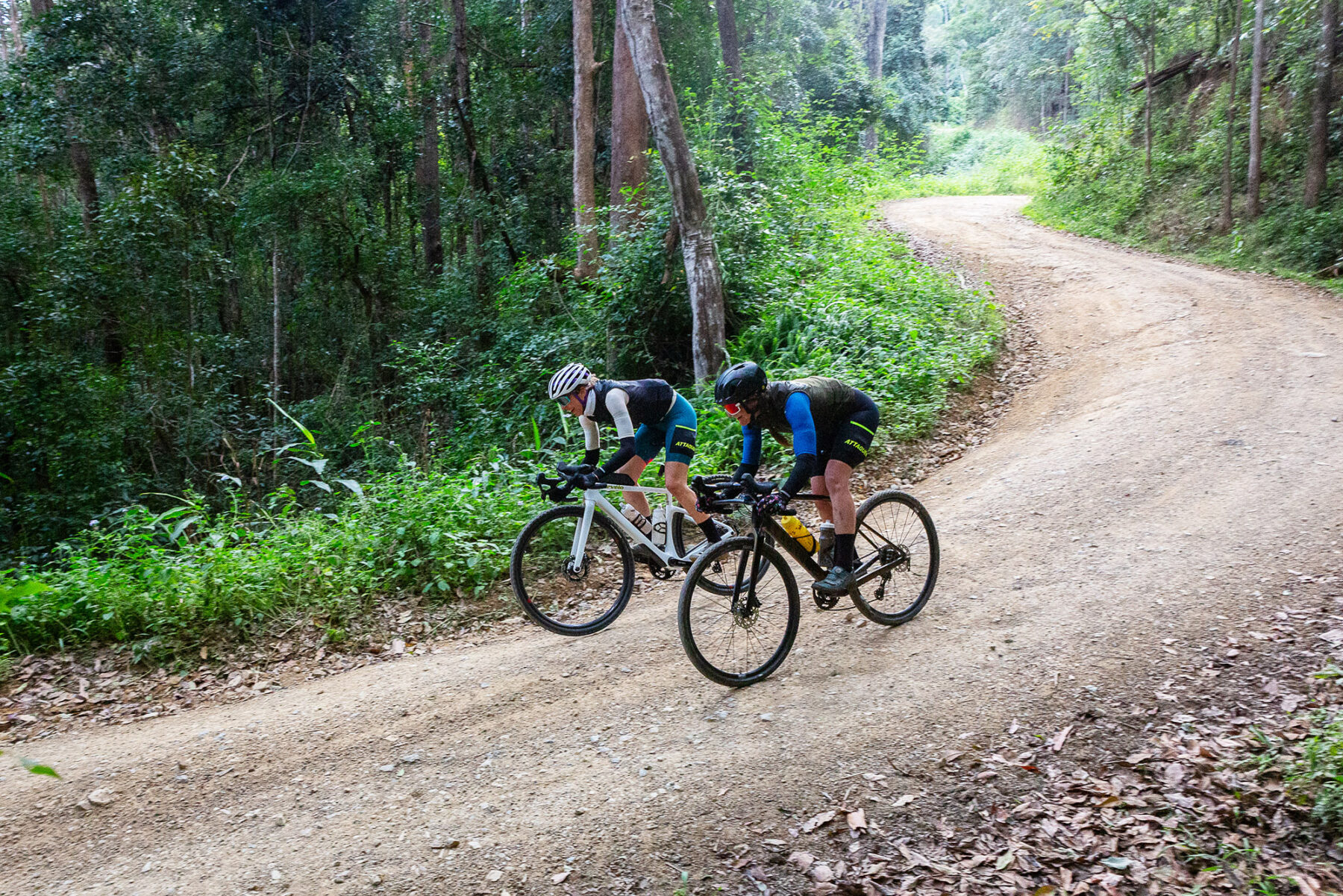
Spend time experimenting with how your braking power transfers on different surfaces as well – on hardpacked dirt roads you’ll still have short stopping distances, however on higher speed gravel roads with loose surfaces, you could be amazed at how much longer it takes to stop. This isn’t something you want to discover while careening towards a locked gate or fallen blue gum!
Pedal by feel
If you’re used to spinning a good cadence and pushing hard on the flats, you’re doing well. A consistent cadence will always reward you when riding and bike, and so will the ability to push hard on the pedals. Climbing, or starting again on a gravel climb, can be an entirely different type of pedalling. You really need to get used to ‘feeling’ what the rear tyre is doing – you’ll be doing a lot lower cadence, high torque climbing efforts to avoid spinning the wheel as the surface and gradient changes.
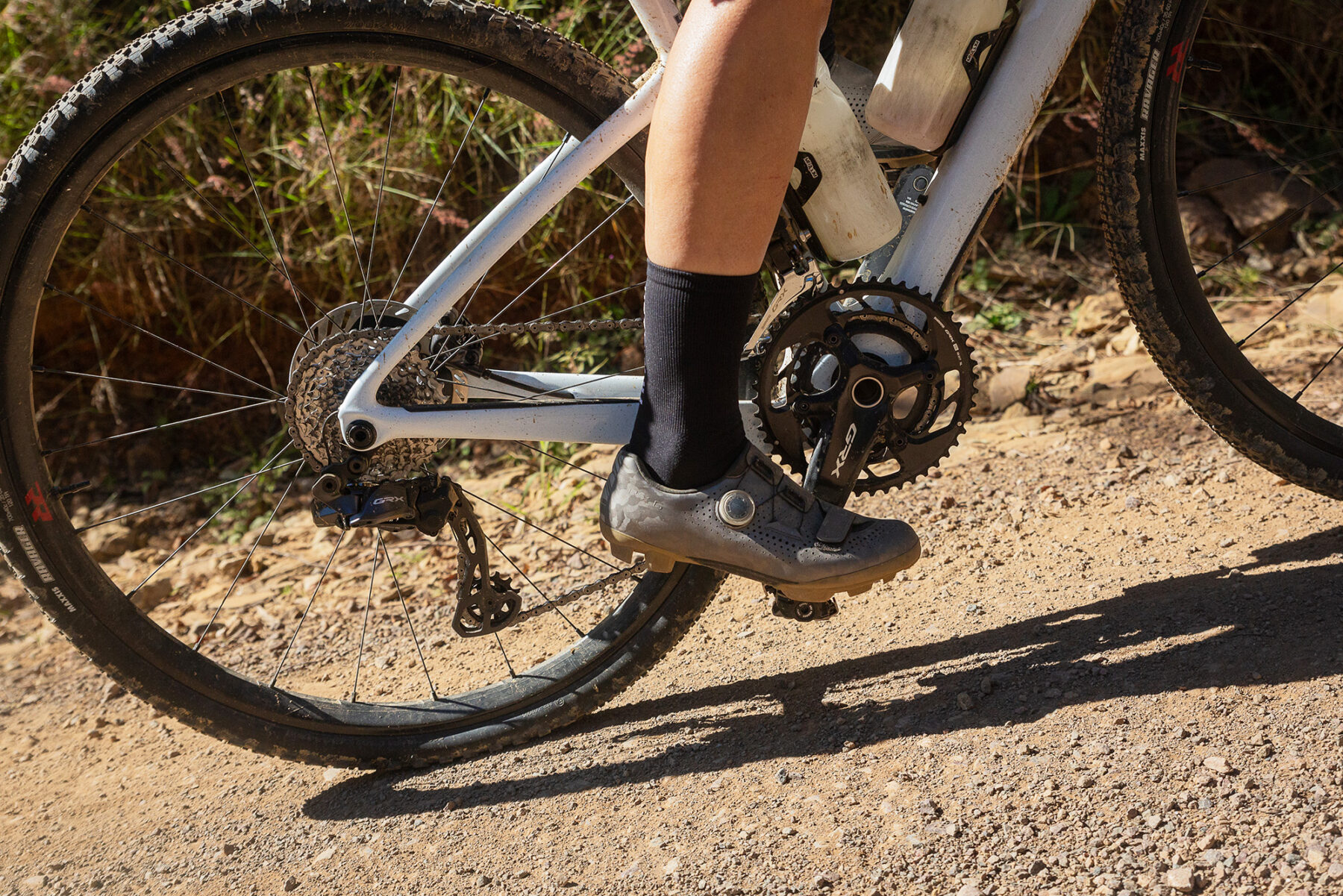
Go riding with some more experienced gravel riders and you’ll see the subtle – but important – changes they make to their pedal stroke on even the shortest climbs. Mashing hard gears or gearing too low won’t work – it takes practice, experience, and a better sense of what’s going on at the contact patch.
Look up and look ahead
We are all used to looking ahead and spotting our lines when road riding. There are plenty of hazards to avoid after all – from potholes to parked cars, debris, other riders and fallen branches. Gravel riding can have all those things, but far more inconsistency in the surface of what you’re riding. This can be from hard-packed dirt to countless types of gravel, mud, murky stream crossings and more. So, look up, scan what lies ahead, and continually plan your lines, speed and braking. It is more important to shift gear earlier on gravel than on road, as shifts under load can impact the shift quality, and traction. If you’re in doubt? Just err on the side of caution while you build your toolbox of gravel riding skills.
A soft touch
It’s rare that a death grip on the controls is the best choice, and that’s the same for gravel riding. Sure, hold on securely by all means. But while your grip may be firm and deliberate, you need to stay supple through your arms, letting your elbows (and your knees) play a role in helping your bike move over rougher gravel sections as needed.
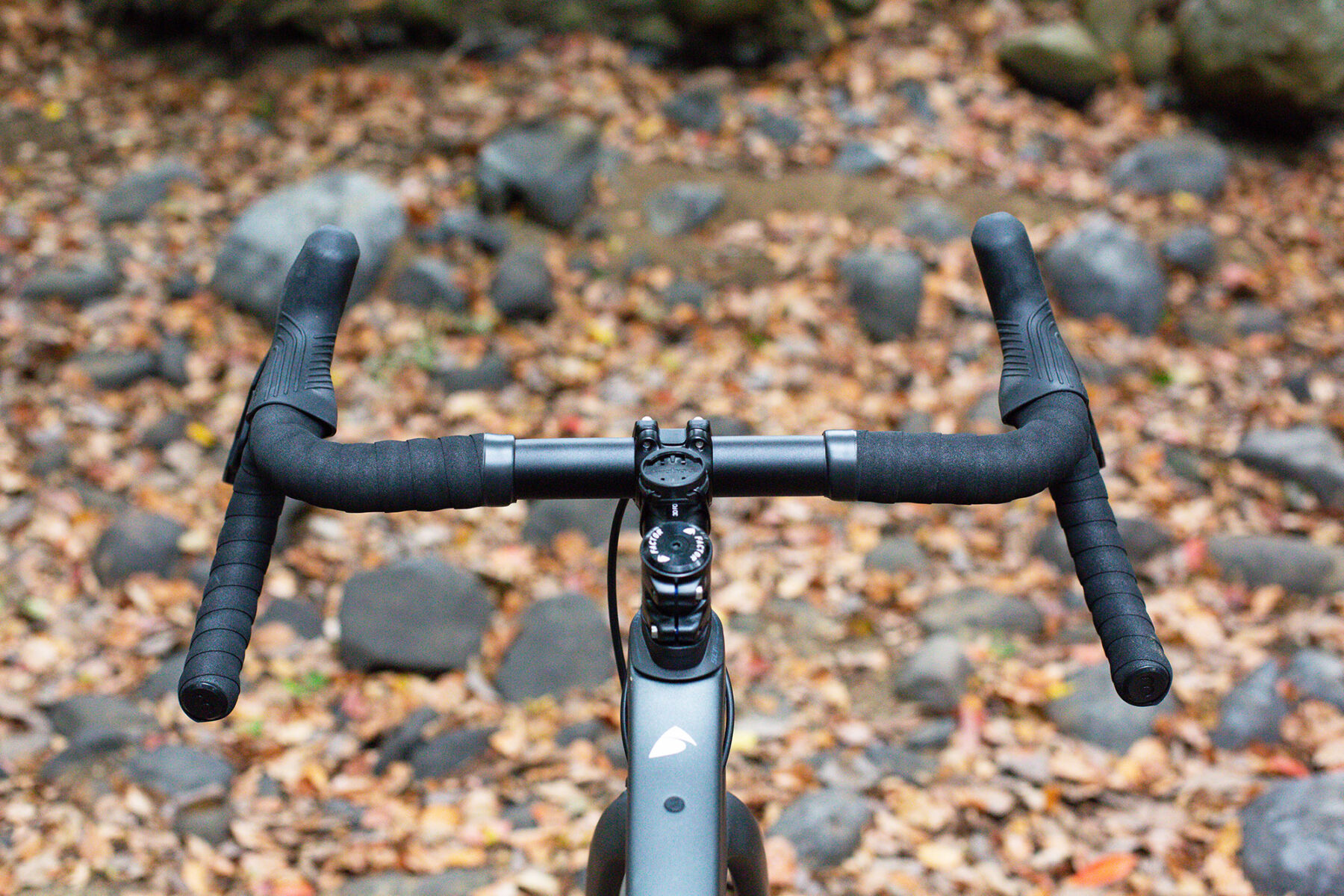
At times you will need to put more pressure through the bars or pedals to ‘push’ the wheels into the gravel for traction. So just be aware that your contact with the bike must remain very dynamic – just as it would on a demanding mountain descent on your road bike.
Expect to go slow
Don’t make the mistake of being able to transfer a predicted ride time on the road to gravel for a similar distance. Just like 100km on the road will be impacted by conditions and climbing, a 100km gravel route will be impacted the same way. Except more so, and you’ll likely be going slower the whole time.
While you’re dipping your toe in the gravel water, err on the side of caution when it comes to planning your rides, so you don’t get stuck out having run out of food, water or spares. Your best bet? Find some more experienced friends to tag along with, or join, an organised ride while you find your gravel feet.
Bikes for the rough stuff
If you want to just get a taste for gravel riding near one of Australia’s capital cities, then an all-road bike might suit your needs. But in general, a lot of Australian gravel routes are rougher than what we see on Instagram. So, your gravel bike needs to match that, especially if you want to tackle some multiday bikepacking routes – loaded for camping or otherwise.
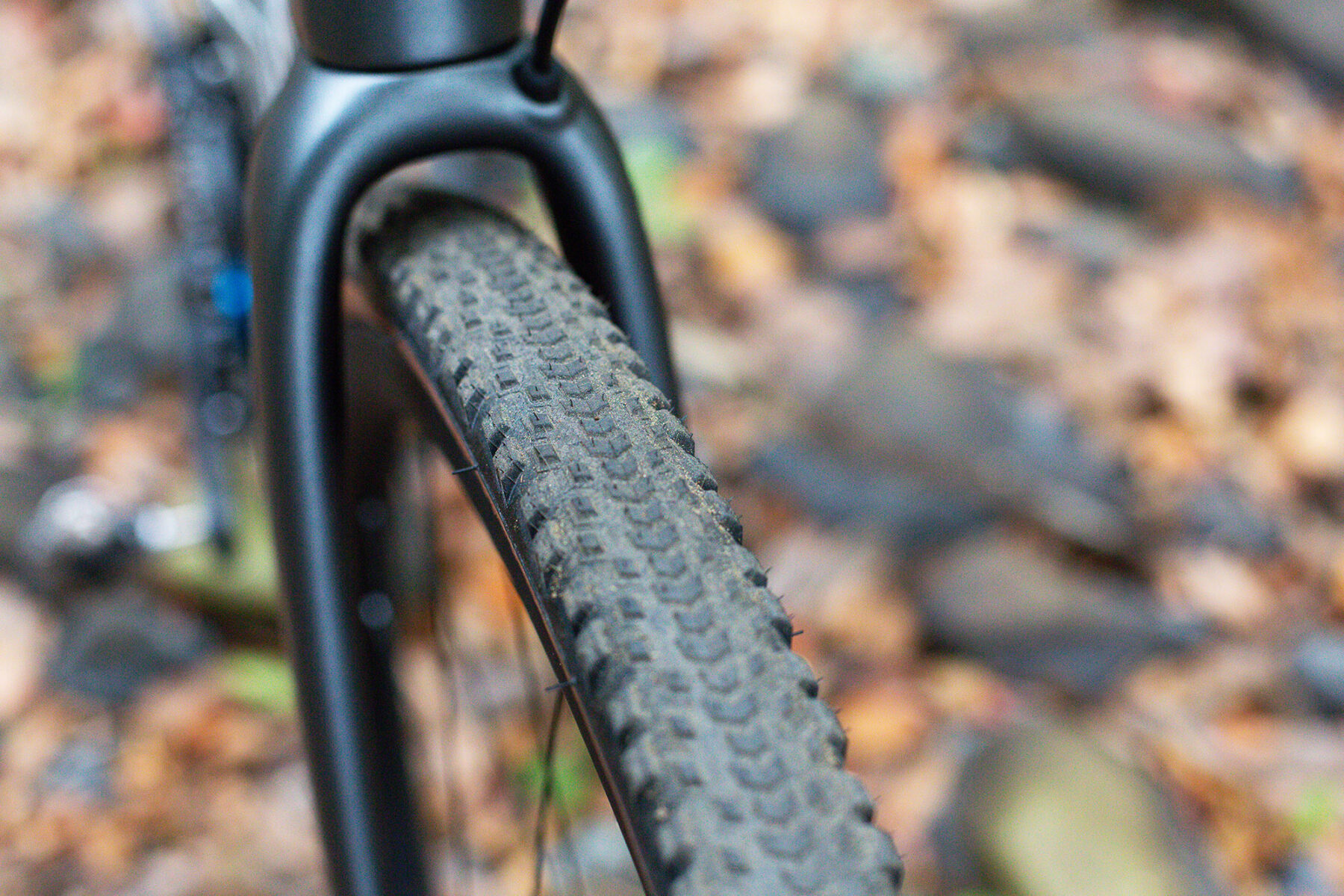
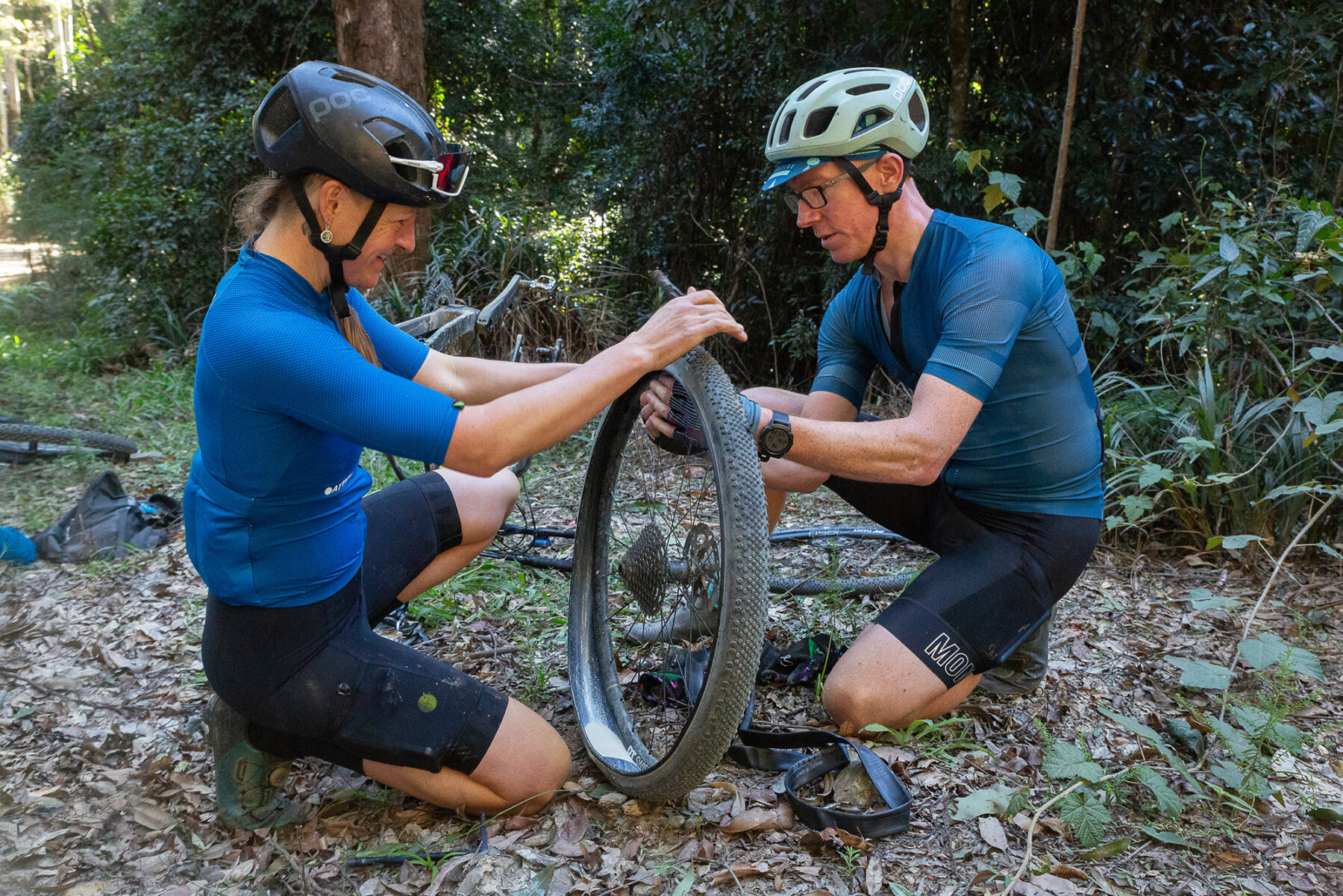
What this means is you should look at tyre clearance; aim for 45mm as a minimum clearance but err toward 50mm if possible. Prioritise wider rims that let a tyre provide more cushion, compared to something with a tall profile for aerodynamics. And if you’re looking at a 1x gravel bike, make sure the rear cassette looks like a mountain bike cassette, not one from your road bike. The gravel bike that looks fast and aero on the shop floor might just feel unstable and uncomfortable once you’re out in the boonies.
Be prepared to walk
As a good friend once told me: “There are two types of riders; those who walk, and liars”. Bike riding is about adventure in one way or another, and gravel riding can certainly help open some new routes that you’d have no business trying on a road bike.
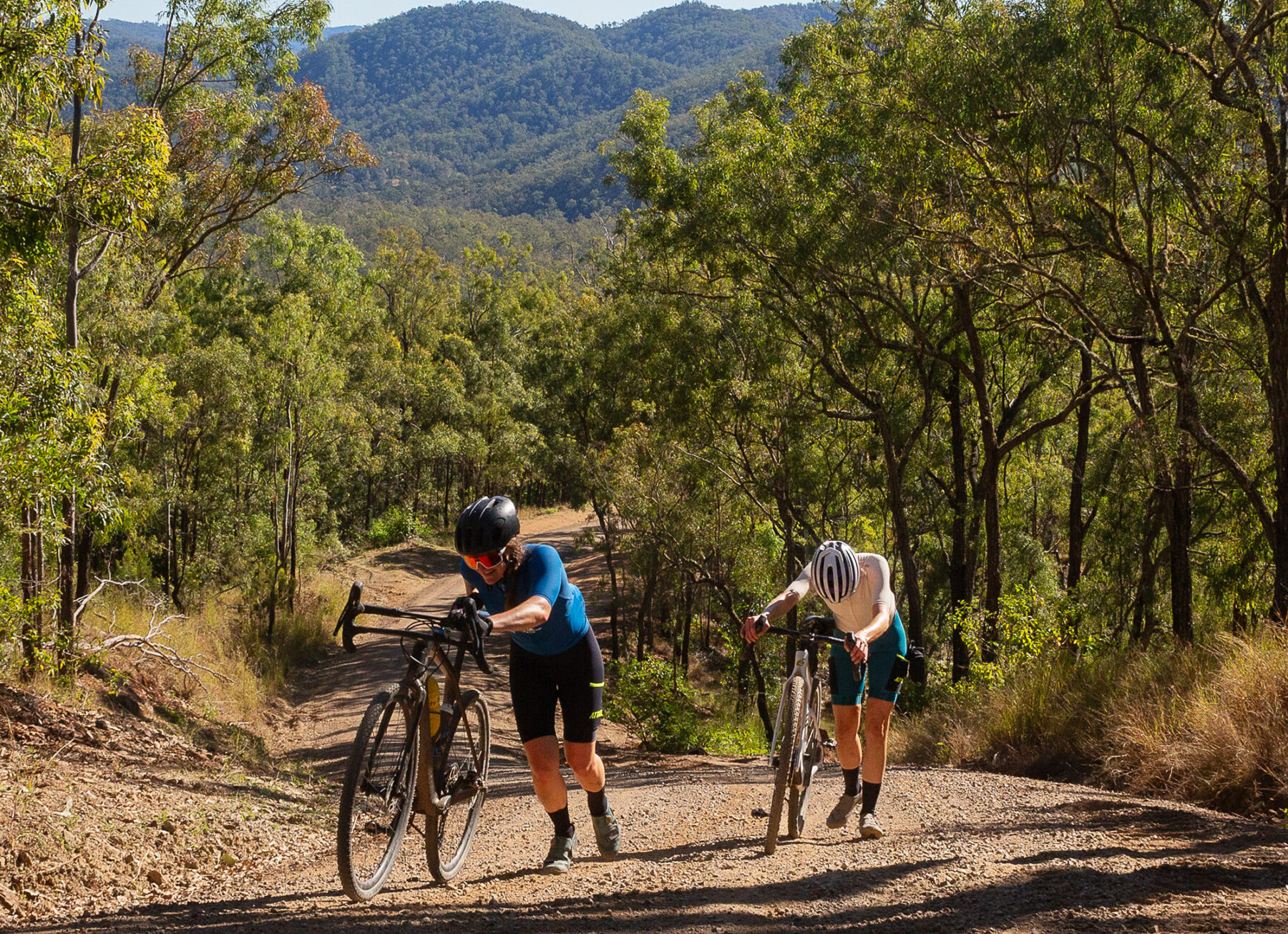
From the saddle of your gravel bike you will see amazing views, ride through stunning landscapes, and no doubt suffer through some tough times. And, at times, you may need to get off and walk. While that is a big no-no on the road, for gravel it could just be part of it when you’re out seeking adventure. So, enjoy it.

